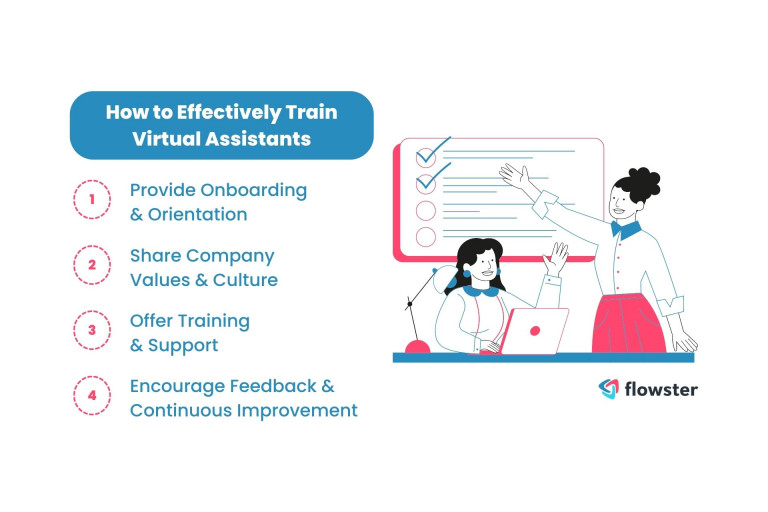As an entrepreneur, you wear multiple hats, juggling various responsibilities to keep your business running smoothly. However, trying to handle every task on your own can quickly become overwhelming and hinder your growth potential. This is where virtual assistants can be a game-changer for your business. In this article, we will explore the world of virtual assistant training, focusing on how to effectively delegate and scale your business for success.
Introduction
In today’s digital age, virtual assistants have become indispensable assets for entrepreneurship – to optimize their time, streamline operations, and focus on strategic activities.. A virtual assistant is a professional who provides remote administrative, creative, technical, or specialized support to individuals or businesses. By hiring a virtual assistant, you can offload non-core tasks and concentrate on high-value activities that drive growth.
Article Outline
What is a Virtual Assistant?
A virtual assistant is a remote professional who works independently, providing a wide range of virtual assistant services based on their expertise and skill set. They can handle tasks such as managing emails, scheduling appointments, conducting research, handling customer inquiries, social media management, content creation, and much more. Virtual assistants are flexible and can adapt to different industries and business models, offering tailored support to meet your specific needs.
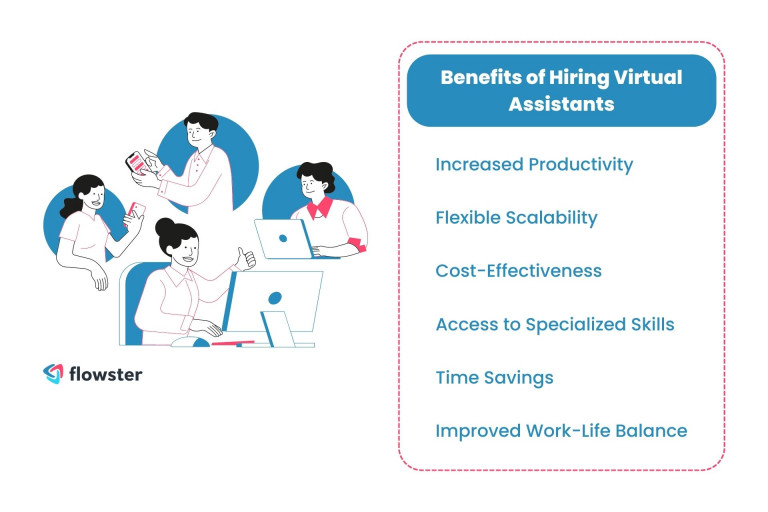
Benefits of Hiring a Virtual Assistant
- Increased productivity: With a virtual assistant taking care of routine tasks, you can focus on strategic activities that require your expertise, leading to increased productivity and efficiency.
- Cost-effectiveness: Hiring a virtual assistant is often more affordable than employing full-time staff, as you only pay for the hours worked or tasks completed.
- Flexible scalability: Virtual assistants can quickly adapt to your changing business needs. Whether you need assistance for a few hours a week or on a project basis, they can accommodate your requirements.
- Access to specialized skills: Virtual assistants often have expertise in specific areas, such as graphic design, content writing, bookkeeping, or social media management, allowing you to tap into specialized skills without the need for extensive training.
- Time savings: Delegating time-consuming tasks to a virtual assistant frees up your schedule, allowing you to focus on core business activities or even enjoy personal time.
- Improved work-life balance: By offloading non-core tasks to a virtual assistant, you can achieve a better work-life balance, reducing stress and burnout.
Virtual Assistant Training for Entrepreneurs
To fully leverage the benefits of virtual assistants and ensure a successful working relationship, it’s crucial to invest in their training and onboarding. Here are some essential steps to consider:
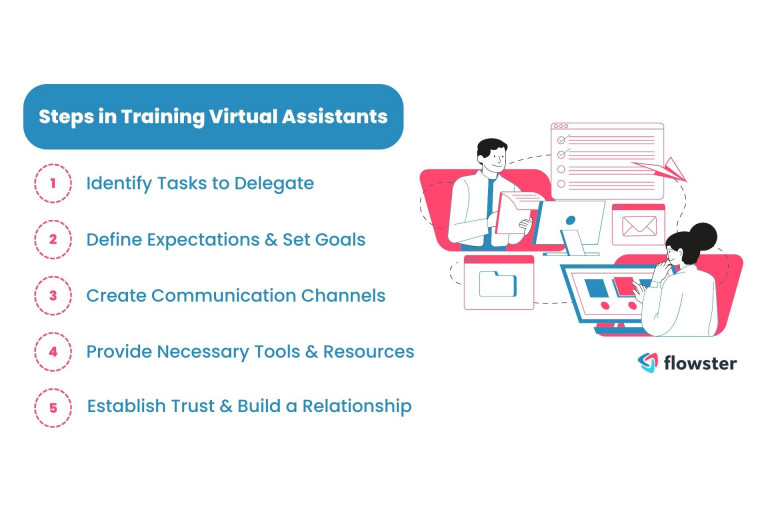
1. Identifying Tasks to Delegate
Start by identifying tasks that consume a significant amount of your time or fall outside your expertise. Common tasks to delegate include email management, scheduling, data entry, social media management, research, customer support, and content creation. Make a list of these tasks to communicate effectively with your virtual assistant.
2. Defining Expectations and Setting Goals
Clearly define your expectations and outline the goals you want to achieve by hiring a virtual assistant. Communicate your business objectives, desired outcomes, and performance metrics. This clarity ensures that both you and your virtual assistant are on the same page, working towards common goals.
3. Creating Clear Communication Channels
Establishing effective communication channels is vital for smooth collaboration. Utilize tools like email, project management software, instant messaging apps, or video conferencing platforms to stay connected with your virtual assistant. Define preferred communication methods and establish response time expectations to maintain clear and timely communication.
4. Providing Necessary Tools and Resources
Equip your virtual assistant with the tools and resources they need to perform their tasks efficiently. This may include providing access to project management software, collaboration tools, file-sharing platforms, or any industry-specific software or licenses. Ensure they have the necessary information and guidelines to deliver quality work.
5. Establishing Trust and Building a Relationship
Building trust is essential for a successful virtual assistant relationship. Clearly communicate your expectations, demonstrate trust in their abilities, and provide constructive feedback. Encourage open and transparent communication to foster a strong working relationship built on trust and mutual respect.
Finding the Right Virtual Assistant
Finding the right virtual assistant is crucial for a successful partnership. Consider the following steps when hiring virtual assistants:
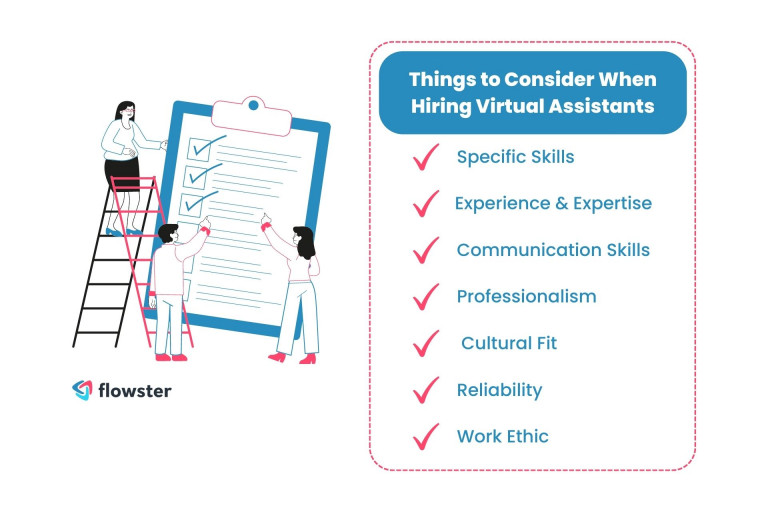
Determining Skill Requirements
Identify the specific skills and expertise you need in a virtual assistant. Determine whether you require assistance in administrative tasks, graphic design, content writing, social media management, or any other specialized area. This will help you narrow down your search and find candidates with the relevant skills.
Evaluating Experience and Expertise
Review the experience and expertise of potential virtual assistants. Look for evidence of their past work, such as certifications, testimonials, or case studies. Assess their ability to handle the tasks you require and ensure they align with your business goals.
Conducting Interviews and Assessments
Once you have shortlisted candidates, conduct interviews to gauge their communication skills, professionalism, and cultural fit. Consider conducting skill assessments or requesting sample work to evaluate their competence in performing the tasks you need assistance with.
Checking References and Testimonials
Contact references provided by the virtual assistant to gain insights into their reliability, work ethic, and ability to meet deadlines. Reading testimonials or reviews from previous clients can also give you a better understanding of their performance and customer satisfaction levels.
Training Virtual Assistants Effectively
Once you’ve found the right virtual assistant, effective training is crucial to ensure they are equipped with the knowledge and skills necessary to perform their tasks efficiently. Here are some key considerations for training virtual assistants:
Providing Initial Onboarding and Orientation
During the onboarding process, introduce your virtual assistant to your business’s processes, culture, and values. Provide a comprehensive orientation, including an overview of your business, its goals, and the role it will play in supporting those goals. This will help them understand their responsibilities and align their work with your objectives.
Sharing Company Values and Culture
Communicate your company’s values, mission, and vision to your virtual assistant. Share your expectations regarding professionalism, communication, and customer service. This will help them align their work approach with your company’s culture, ensuring consistency and quality in their interactions.
Offering Ongoing Training and Support
Continuously invest in the growth and development of your virtual assistant. Offer regular training sessions to enhance their skills and keep them updated on industry trends. Provide resources such as articles, videos, webinars, or online courses that can help them improve their expertise.
Encouraging Feedback and Continuous Improvement
Create a feedback loop where your virtual assistant feels comfortable providing input and suggestions. Regularly check in with them to discuss their progress, address any concerns, and provide constructive feedback. This open communication fosters a culture of continuous improvement and strengthens the virtual assistant’s ability to meet your expectations.
Delegating Tasks and Responsibilities
Delegation is a vital aspect of working with a virtual assistant. Here’s how to delegate effectively:
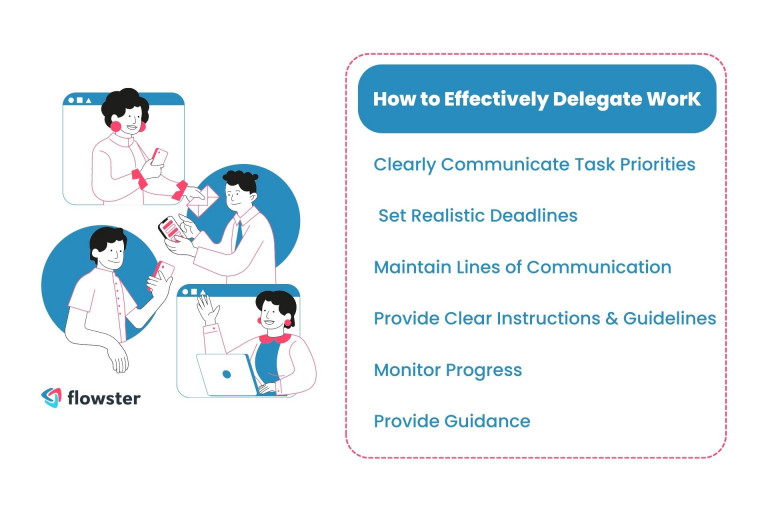
Prioritizing Tasks and Setting Deadlines
Clearly communicate task priorities and set realistic deadlines. Identify tasks that require immediate attention and those that can be completed in stages. This helps your virtual assistant manage their time effectively and ensures that critical tasks are addressed promptly.
Establishing Effective Communication Channels
Maintain open lines of communication with your virtual assistant. Regularly check in to provide guidance, clarify instructions, and answer any questions they may have. Utilize project management tools or shared calendars to track progress and deadlines.
Providing Clear Instructions and Guidelines
When delegating tasks, provide clear instructions and guidelines to avoid confusion. Clearly outline the desired outcome, any specific requirements, and the level of detail expected. Break complex tasks into smaller, manageable steps to ensure clarity.
Monitoring Progress and Offering Guidance
Monitor the progress of delegated tasks and provide guidance as needed. Be available to answer questions, offer feedback, or provide additional information or resources. Regularly review completed work to ensure it meets your expectations and make any necessary adjustments.
Scaling Your Business with Virtual Assistants
Virtual assistants can be instrumental in scaling your business. Here’s how they can contribute to your growth:
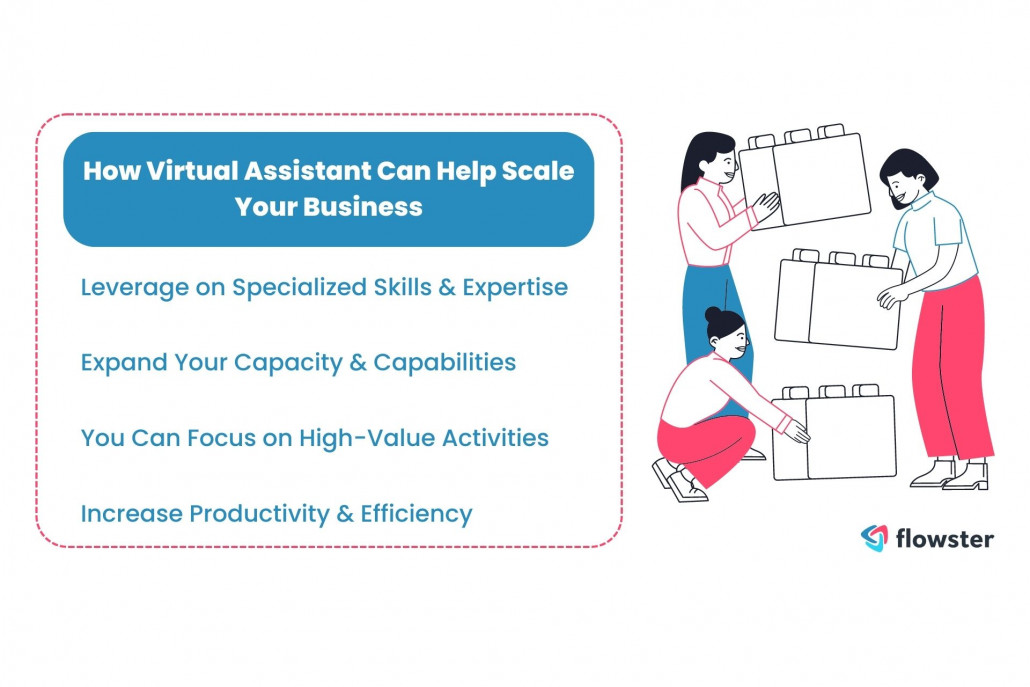
Leveraging Specialized Skills and Expertise
Virtual assistants often possess specialized skills that can add value to your business. Whether it’s web development, graphic design, content marketing, or social media management, leveraging their expertise allows you to provide high-quality deliverables and expand your service offerings.
Expanding Your Capacity and Capabilities
By outsourcing tasks to virtual assistants, you can increase your business’s capacity without the need to hire additional in-house staff. Virtual assistants provide flexibility, allowing you to take on more clients, handle larger projects, or explore new business opportunities.
Focusing on High-Value Activities
Delegating non-core tasks to virtual assistants frees up your time to focus on high-value activities that drive revenue and strategic growth. You can concentrate on business development, client acquisition, product innovation, or building strategic partnerships.
Increasing Productivity and Efficiency
With virtual assistants managing routine tasks, you can streamline your operations and improve overall productivity and efficiency. By optimizing your time and resources, you can achieve more in less time and deliver exceptional results to your clients.
Overcoming Challenges in Virtual Assistant Management
While virtual assistants offer numerous benefits, managing them remotely can present challenges. Here are some common challenges and strategies to overcome them:
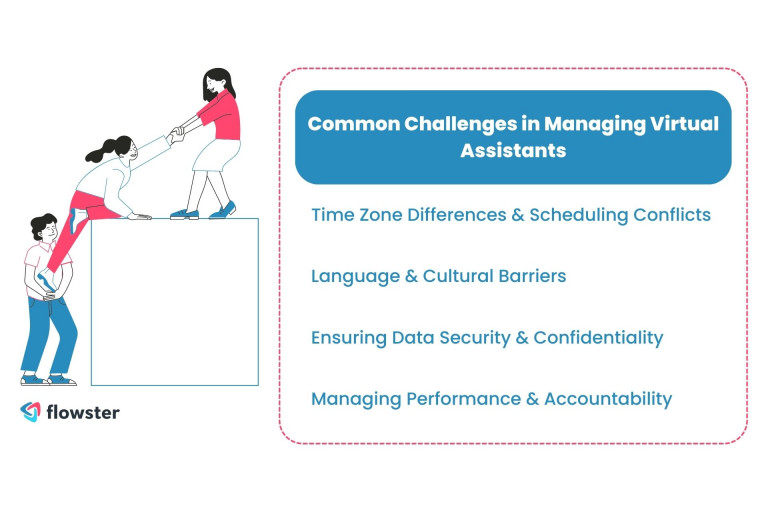
Time Zone Differences and Scheduling Conflicts
If you work with virtual assistants in different time zones, scheduling conflicts can arise. Establish clear communication regarding availability and establish overlapping working hours where possible. Utilize scheduling tools or shared calendars to coordinate meetings and deadlines effectively.
Language and Cultural Barriers
Working with virtual assistants from different cultures or language backgrounds requires sensitivity and clear communication. Be patient and encourage open dialogue. Avoid idioms or jargon that may be difficult to understand and clarify expectations to ensure effective collaboration.
Ensuring Data Security and Confidentiality
When working with virtual assistants, data security and confidentiality are paramount. Implement robust security measures such as secure file-sharing platforms, encrypted communication channels, and non-disclosure agreements. Regularly review and update your security protocols to protect sensitive information.
Managing Performance and Accountability
Setting clear expectations and performance metrics from the outset helps manage accountability. Regularly assess your virtual assistant’s performance, provide constructive feedback, and acknowledge their achievements. Utilize project management tools or time-tracking software to monitor progress and ensure timely completion of tasks.
Ready to revolutionize your onboarding training?
FAQs about Virtual Assistants
- Can virtual assistants work in different time zones?
Yes, virtual assistants can work in different time zones. It’s important to establish clear communication and coordinate overlapping working hours to ensure effective collaboration.
- How do I ensure the security of sensitive information?
To ensure the security of sensitive information, implement robust data security measures such as secure file-sharing platforms, encrypted communication channels, and non-disclosure agreements. Regularly review and update your security protocols.
- How can I effectively communicate with a virtual assistant?
To effectively communicate with a virtual assistant, utilize tools such as email, project management software, instant messaging apps, or video conferencing platforms. Clearly define preferred communication methods and establish response time expectations.
- What tasks should I delegate to a virtual assistant?
Tasks that can be delegated to a virtual assistant include email management, scheduling, data entry, social media management, research, customer support, content creation, and more. Identify tasks that consume your time or fall outside your expertise.
- How much does it cost to hire a virtual assistant?
The cost of hiring a virtual assistant varies depending on factors such as location, experience, skill set, and the nature of the tasks involved. Virtual assistants can be more cost-effective than employing full-time staff, as you pay only for the hours worked or tasks completed.
Conclusion
Virtual assistant training is a crucial aspect of leveraging their full potential to delegate and scale your business. By identifying tasks to delegate, finding the right virtual assistant, and providing effective training and support, you can unlock the benefits of this valuable resource. Embrace the opportunity to focus on strategic activities, expand your business’s capabilities, and achieve scalability and growth.
Ready to create your first step-by-step guide or workflow template?
You can start from scratch to create a step-by-step guide or any workflow template, or you can look through our templates in the Flowster Marketplace.
Want help? Use our “Done for You” service to let our experts build custom workflows for you.
Related Articles
Would you like to learn more? See our other informative articles.
How to Make a Checklist: A Comprehensive Guide with Free Checklist Templates
How to Use AI to Easily Create and Maintain SOPs for Your Business

